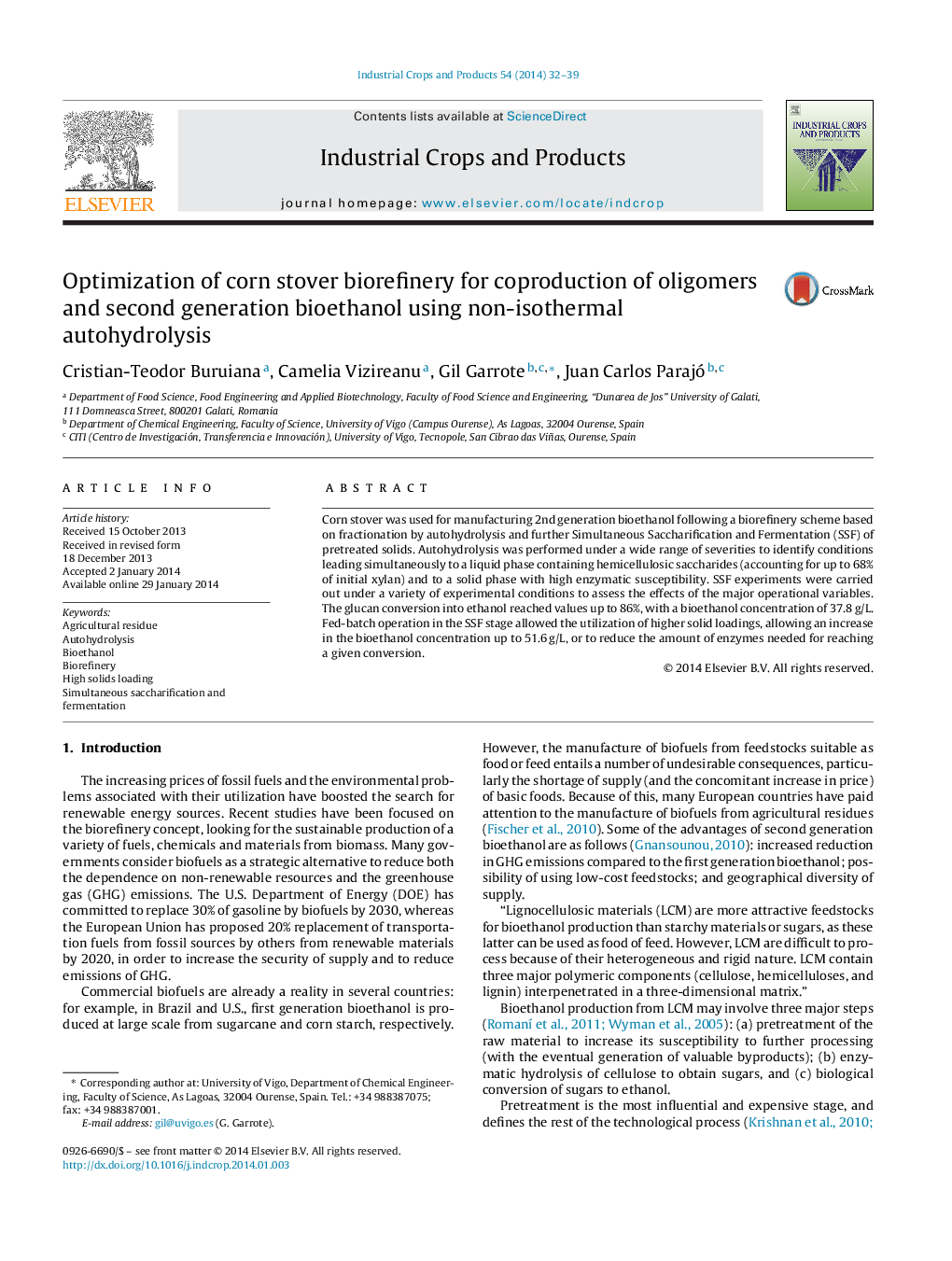| Article ID | Journal | Published Year | Pages | File Type |
|---|---|---|---|---|
| 4513381 | Industrial Crops and Products | 2014 | 8 Pages |
•Xylooligomers were obtained using non isothermal autohydrolysis.•Solids with high susceptibility to enzymes were obtained.•The conditions for xylooligomer and bioethanol production were compatible.•Favourable substrate conversion and bioethanol concentration were obtained in fed-batch mode.
Corn stover was used for manufacturing 2nd generation bioethanol following a biorefinery scheme based on fractionation by autohydrolysis and further Simultaneous Saccharification and Fermentation (SSF) of pretreated solids. Autohydrolysis was performed under a wide range of severities to identify conditions leading simultaneously to a liquid phase containing hemicellulosic saccharides (accounting for up to 68% of initial xylan) and to a solid phase with high enzymatic susceptibility. SSF experiments were carried out under a variety of experimental conditions to assess the effects of the major operational variables. The glucan conversion into ethanol reached values up to 86%, with a bioethanol concentration of 37.8 g/L. Fed-batch operation in the SSF stage allowed the utilization of higher solid loadings, allowing an increase in the bioethanol concentration up to 51.6 g/L, or to reduce the amount of enzymes needed for reaching a given conversion.
